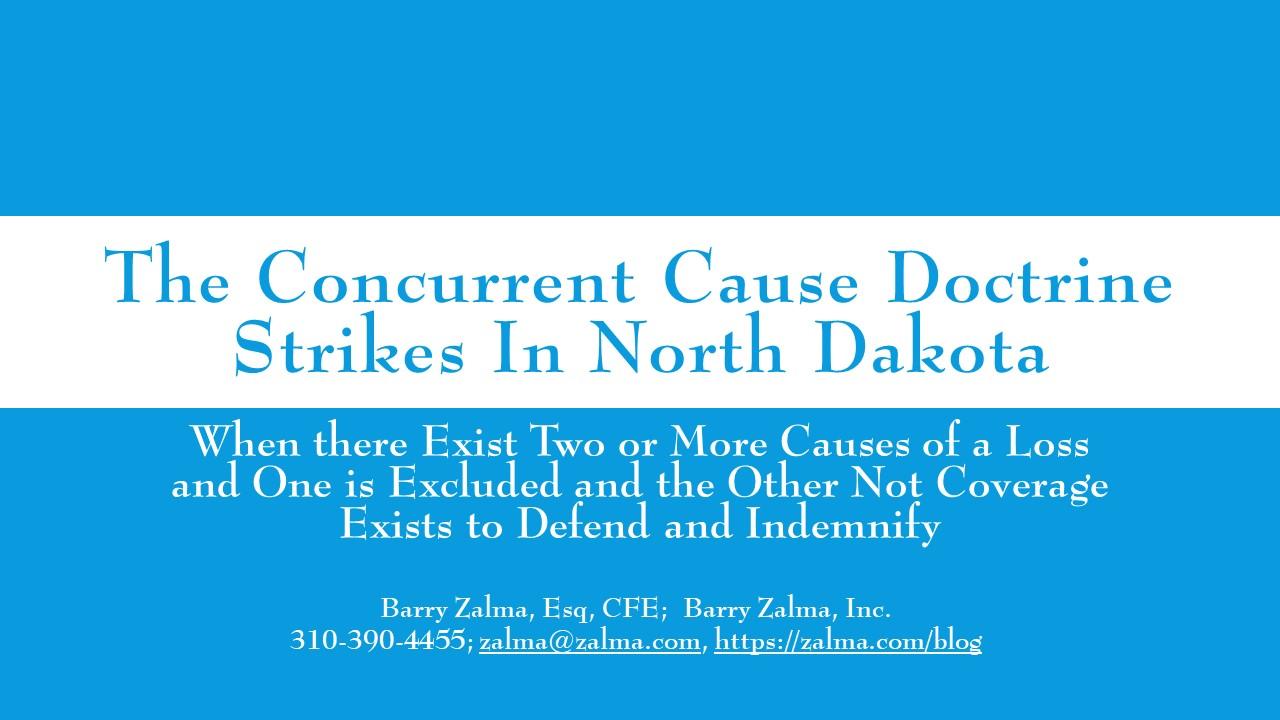Concurrent Cause Doctrine Provides Coverage Despite Exclusion

When there Exist Two or More Causes of a Loss and One is Excluded and the Other Not Coverage Exists to Defend and Indemnify
Read the full article at https://www.linkedin.com/pulse/concurrent-cause-doctrine-strikes-north-dakota-barry-zalma-esq-cfe and at https://zalma.com/blog plus more than 3450 posts.
North Star Mutual Insurance appealed from a declaratory judgment holding that a commercial general liability policy it issued to Jayme Ackerman for Ackerman’s potential liability arising from an accident involving Kyle Lantz and that North Star has a duty to defend Ackerman. In North Star Mutual Insurance v. Jayme Ackerman, No. 20190135, 940 N.W.2d 857, Supreme Court of North Dakota. (March 25, 2020) the Supreme Court was asked to reverse because of a clear and unambiguous exclusion.
ZALMA OPINION
The concurrent cause doctrine applies in third party liability policies to resolve the obvious problem when more than one event causes injury to a third party. Although the wheelbarrow fell off a vehicle and that wheelbarrow was a cause of the the loss the fact that it was not removed from the road for many hours so that the injury causing accident could occur much later, was negligent, not connected to an auto, and, therefore, a covered cause.
We are 100% funded for October.
Thanks to everyone who helped out. 🥰
Xephula monthly operating expenses for 2024 - Server: $143/month - Backup Software: $6/month - Object Storage: $6/month - SMTP Service: $10/month - Stripe Processing Fees: ~$10/month - Total: $175/month
- Art
- Causes
- Crafts
- Crime
- Dance
- Drinks
- Film
- Finance
- Fitness
- Food
- Juegos
- Gardening
- Health
- Home
- Literature
- Music
- Networking
- Paranormal
- Other
- Politics
- Directorio
- News
- Party
- Science
- Religion
- Shopping
- Sports
- SyFy
- Politically Incorrect
- Philosophy
- Theater
- Technology
- Wellness



